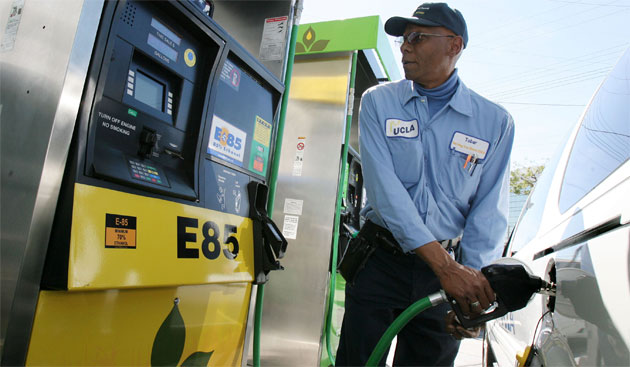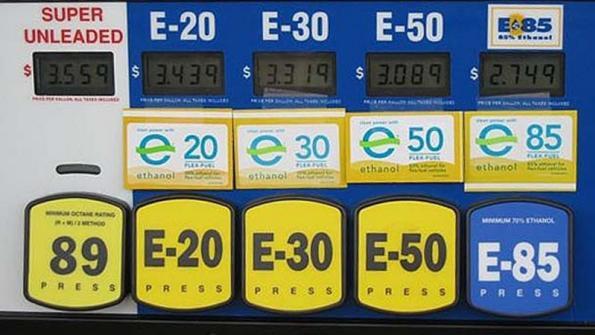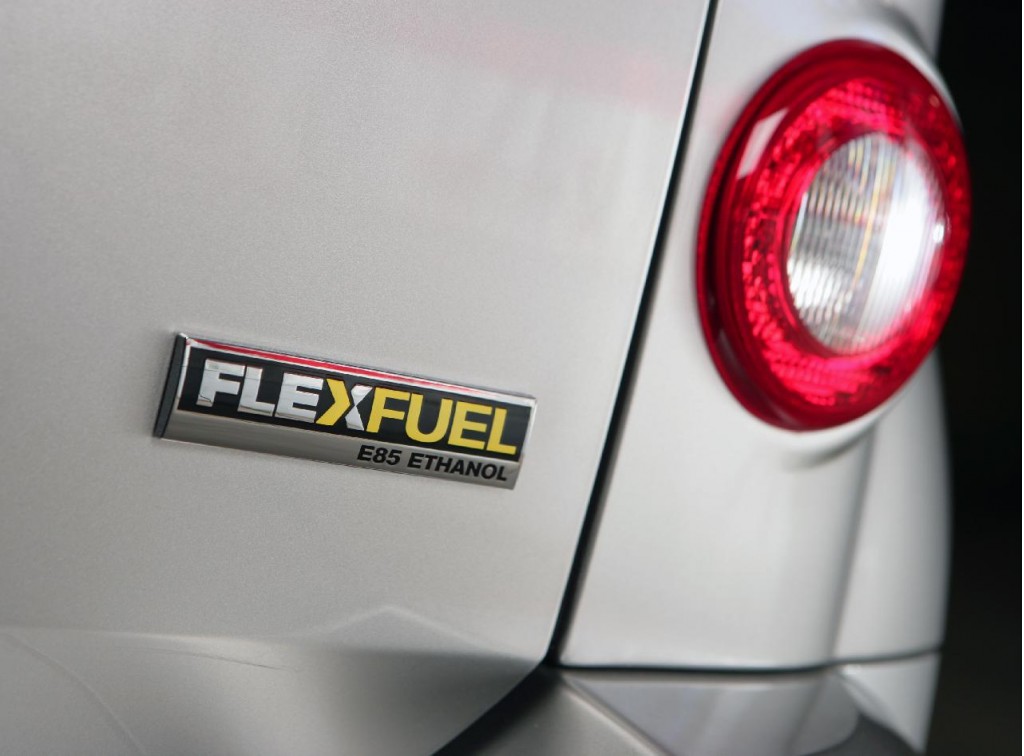Seven years later, times have changed.
The Environmental Protection Agency is set to cut the amount of ethanol required under the act's Renewable Fuels Standard by 1.4 billion gallons, reducing the target amount for 2014 from 14.1 billion gallons to 12.7 billion.
A recent Navigant Research blog post argues that the Act's original volume mandates no longer match the reality that consumers have little interest in the alcohol fuel--but that regulators still risk making too deep a cut.

E85 station in Los Angeles
Changing times
The 2007 Act was meant to wean the U.S. off foreign oil, but several factors have now suggest that introducing more ethanol to the fuel supply may be unnecessary.
U.S. gasoline usage peaked in 2006--the year before the Act was passed--and the decrease is expected to continue in the future.
In addition, Americans are buying fewer cars, and driving them less.
The fuel economy of new cars has never been higher, and the average efficiency of all U.S. vehicles will only increase--for decades--as the impact of Corporate Average Fuel Economy (CAFE) standards covering vehicles through the 2025 model year ripples through the fleet.
That may be good news for consumers--but it arguably makes ethanol a victim of change.
That's because the targets under the Renewable Fuels Standard are specified by volume, not percentage of fuel sold--and consequently they can't be adjusted to account for the reduction in demand.

Pump with multiple ethanol/gasoline blends.
Solution: More ethanol?
Despite recent attempts to kill the ethanol mandate altogether and the seemingly inevitable EPA cut, ethanol producers still feel blending more ethanol with gasoline could help meet the original target.
U.S. drivers already pump E10--a blend of 10 percent ethanol and 90 percent gasoline--into their tanks, and have done for two decades now.
But E85--an 85-percent ethanol blend--has been available only in very limited quantities since launching in the early 2000s.

FlexFuel badge on E85-capable 2009 Chevrolet HHR
Navigant cites 2,400 E85 refueling stations in the U.S., and the number of Flex-Fuel Vehicles--which can run on E85 or blends with less ethanol--is expected to reach 13 million in 2014.
However, that's still not enough.
To meet the 14.1-billion gallon target, E85 consumption would have to grow by a factor of three: from the current 4 percent of eligible vehicles to 14.5 percent, or 900 million gallons.
For that to happen, the price has to get lower. Ethanol blends are less energy-dense than pure gasoline, so each gallon provides less distance traveled and drivers have to fill up more.
The EPA has approved E15 fuel for use vehicles from 2001 or later, but implementation has been slow.
The AAA and other groups have come out against it, claiming that it is only suitable for 5 percent of vehicles currently on the road.
Despite the drawbacks, Navigant expects this year's U.S. ethanol consumption to reach 13.9 billion gallons--so it suggests that the EPA may actually be cutting the target too much.
Do you think the U.S. has more ethanol than it can handle?
Leave us your thoughts in the Comments below.
_______________________________________________












